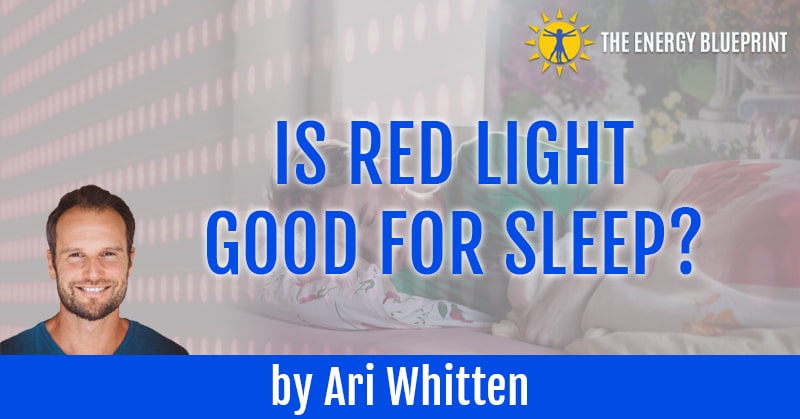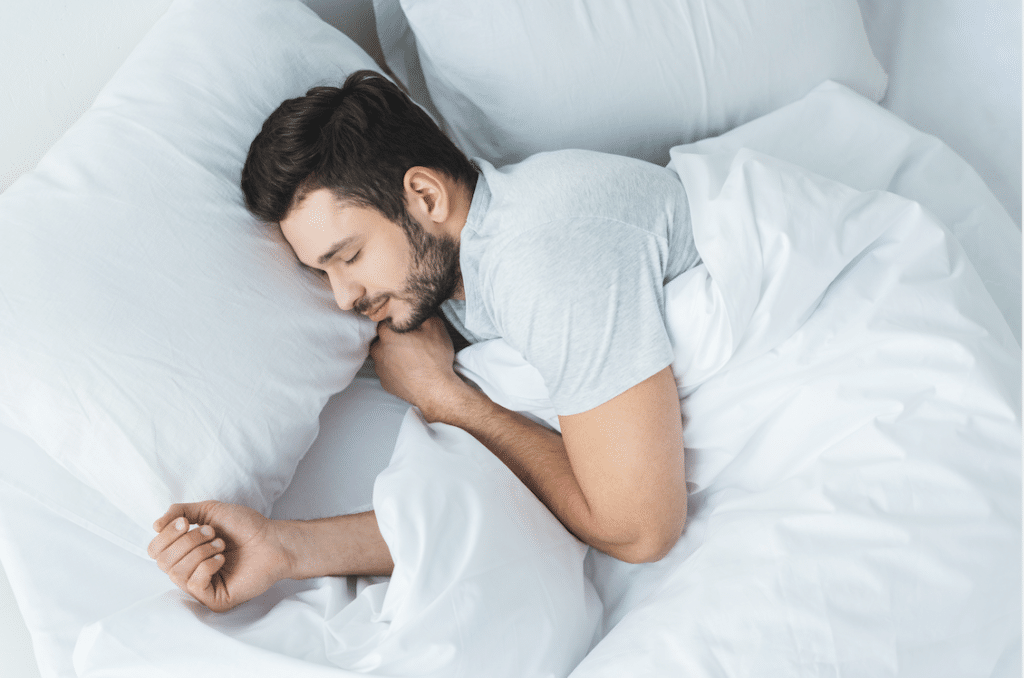
Problems sleeping are not uncommon but the results can be very serious. Light plays an important roll in our sleep cycles and our ability to get a restful sleep. Blue light is known to have negative effects on our ability to relax, but more studies on the effects of red light are showing a good deal of promise.
To get a basic understanding of Red Light Therapy you can check out my blog here: What is Red Light Therapy: Benefits, Side Effects, and How to Use It.
Problems with Sleep are Very Common
Sleep problems are quite common, especially in adults. It seems ironic that we spend our days feeling sleepy but at night when we have a chance to rest we lie perfectly awake. A few of the most common sleep disorders include:
Insomnia is the inability to get to sleep or sleep well at night. It can be caused by stress, jet lag, health conditions, medications, or even the coffee you drink or the food you eat.
Sleep apnea is very common and is treatable. With this condition, people temporarily stop breathing, causing them to be awakened frequently. You may not remember awakening frequently, but experience the symptoms of feeling exhausted or irritable during the day.
Restless leg syndrome is a condition where you have an almost irresistible urge to move your arms or legs and experience uncomfortable, tingling, aching or creeping sensations.
There are also other problems with sleeping that affect our circadian rhythms, or natural sleep cycles. Reasons might include shift disorders in those that work nights or jet lag from traveling.
The Negative Effects of Poor Sleep
Many of us are aware that the lack of sleep can make us foggy and a bit lackluster. But sleep deprivation can also be dangerous. Driving while sleepy causes a decrease in judgment and an increase in reaction time that is similar to driving while intoxicated. According to the National Highway Traffic Safety Administration, fatigue is the cause of 100,000 auto crashes and 1,500 crash-related deaths each year in the United States.1
Poor sleep can also lead to a number of health problems. WebMD notes that chronic fatigue can put you at risk for:
Lack of sleep also ages your skin, leading to fine lines, and dark circles under your eyes. This is because lack of sleep causes your body to release more of the stress hormone cortisol. In excess amounts, cortisol can break down collagen, which provides elasticity to the skin.
“It’s during deep sleep — what we call slow-wave sleep — that growth hormone is released,” notes sleep expert Phil Gehrman, PhD. “It seems to be part of normal tissue repair — patching the wear and tear of the day.”2
Studies show that lack of sleep can lead to an increase in appetite and contribute to weight gain. Researchers at the University of Colorado found that one week of sleeping about 5 hours a night led participants to gain an average of two pounds. Not only does a lack of sleep increase the hormone ghrelin, which triggers feelings of hunger, but it also intensifies cravings for high-fat and high-sugar foods.3
Perhaps the most fascinating side-effect of sleep deprivation is that it leads to a decrease in judgment about sleep itself. People who are continually sleep deprived feel that they have “adapted” to getting little sleep.
“Studies show that over time, people who are getting six hours of sleep, instead of seven or eight, begin to feel that they’ve adapted to that sleep deprivation — they’ve gotten used to it,” Dr. Gehrman explains. “But if you look at how they actually do on tests of mental alertness and performance, they continue to go downhill. So there’s a point in sleep deprivation when we lose touch with how impaired we are.”
The Effects of Light on Sleep
For tens of thousands of years, we lived in a world lit only by fire. Finding a dark place to sleep was not a problem before electricity. Light has a profound effect on our sleep and modern devices have added to the problem of sleep deprivation.
Melatonin, a hormone produced in the brain’s pineal gland, influences sleep by sending a signal to the brain that it is time to prepare for sleep. The physiological preparations include relaxing muscles, increased feelings of drowsiness, and lowering of body temperature. Melatonin runs on a natural cycle, beginning to increase each evening when the sun goes down and increasing through the night, until about 3:00 A.M. when it begins decreasing in anticipation of the start of the day.4
The body’s internal “sleep clock” is hindered by the presence of light. Exposure to light in the evening inhibits the naturally timed release of melatonin, delaying the onset of the body’s transition to sleep.
How Blue Light Keeps You Up at Night
Blue light is helpful for staying awake during the day. The blue wavelengths in natural and artificial light boost your attention and mood, helping you stay alert.
However, that is exactly what we don’t need when preparing for sleep. Exposure to this type of light in the evening can delay the process of melatonin production and even prevent the proper amount from being released.5
Where are we encountering this light in the evening?
- Smartphones
- Tablets
- Flat-screen televisions
- Computer screens
- E-book devices or e-readers
- Fluorescent and LED lighting
The light from any of these devices can make it more difficult to fall asleep, as well as more difficult to experience a full night of sleep. You can end up missing out on REM cycles, which increase in the second half of the night.
There is also a darker side to this light exposure. A Harvard study looked at the possible connection between blue light exposure and diabetes. “The researchers put 10 people on a schedule that gradually shifted the timing of their circadian rhythms. Their blood sugar levels increased, throwing them into a prediabetic state, and levels of leptin, a hormone that leaves people feeling full after a meal, went down.”
While any light can suppress the production of melatonin, blue light does so more powerfully. In another Harvard study, researchers compared the effects of 6.5 hours of exposure to blue light to a comparable level of green light. The blue light suppressed melatonin for twice as long as green light and shifted sleep rhythms by twice as much (3 hours vs. 1.5 hours).6

Protect Yourself at Night
Device manufacturers have made some strides in dealing with blue light exposure. Laptops, cell phones, and tablets now come equipped with a shield option that filters the light, relying more heavily on shorter wavelength red light that is less energizing on the retina.
There is also the option of blue-blocking glasses. These glasses come with yellow lenses that effectively block blue light wavelengths. A 2013 study by Toronto researches found night shift workers who wore these blue-blocking glasses produced more melatonin than workers who did not wear the glasses. It has been shown that blue-blocking glasses effectively block up to 60 percent of blue light.7
Some Harvard recommendations for protecting yourself and getting a good night’s sleep:
- Use dim red lights for night lights. Red light has the least power to shift sleep quality and suppress melatonin levels.
- Avoid looking at bright screens beginning two to three hours before bed or right when you wake up.
- If you work a night shift or use a lot of electronic devices at night, consider wearing blue-blocking glasses or installing an app that filters the blue/green wavelength at night.
- Expose yourself to lots of bright light during the day, which will boost your ability to sleep at night, as well as your mood and alertness during daylight.
How Red Light Helps You Sleep Better
The low color temperature of red light makes it more ideal in evening situations and balancing your internal clock. The rods in our eyes are not sensitive to long-wavelength light and allow our eyes to remain night-adjusted. Plane cockpits and ship cabins use red light bulbs so pilots and sailors can read instrumentation while still able to look outside into the darkness.
For an in-depth understanding behind of the science of red light therapy click here.
In a 2001 study conducted Xu C et al, 38 subjects that had insomnia were treated with an intranasal red light device once a day over 10 days. The results were that serum melatonin had increased. The same researchers treated another 128 patients with insomnia and found the polysomnogram (sleep study that includes data on brain waves as electrical activity) data had improved.
In recent study research conducted in 2018 in Brazil, the effects of red light therapy and other treatments were assessed on patients suffering from migraine headaches. Researchers found that not only did red light therapy reduce the number of headaches, but it was also the only treatment that improved patients’ sleep disorders.8
A Change in Your Routine
Sleep deprivation is a serious matter. It can lead to an array of health problems, including diabetes, heart conditions, stroke, and high blood pressure. But it can also pose a substantial safety risk since the effects of sleep deprivation are similar to being intoxicated, making it unwise to operate vehicles and machinery.
Light has a profound effect on our sleep patterns and quality of sleep. Our circadian rhythms that guide our internal “sleep clock” are tied to the melatonin signals in our brain. Melatonin is greatly affected by light, most so by light in the blue wavelength. Our modern devices are guilty of putting off more blue light, which, when used in the evening, can prolong the time it takes for our bodies to get the signal to go to sleep. While manufacturers are addressing this issue with blue-blocking screens and glasses, we need to be aware of the blue light’s effect and take steps to reduce our screen time in the hours before we want to sleep.
Red light presents a much easier environment on our sleep systems than other wavelengths of light. The rods in our eyes are not sensitive to the longer wavelengths of this type light and the effects on melatonin are much less. Using red light in the evenings can lead to a much more productive and refreshing sleep.
In addition, red light therapy, either through intranasal or other methods, is showing promise in treating sleep disorders. While research continues, red light has proven effective in reducing swelling, helping acne, decreasing headaches, and promoting healthy cell rejuvenation, letting our body heal while we sleep. I have compiled a list of the best red light therapy devices here.
With its seemingly never ending health benefits and safeness, it is no wonder that Dr. Michael Hamblin is also an advocate You can hear our full podcast interview here : The Science on Red Light Therapy Benefits.“
References[+]
| ↑1 | (2017). NHTSA. Drowsy Driving. The National Highway Traffic Safety Administration (NHTSA). |
|---|---|
| ↑2 | Peri, M, (2014). 10 Things to Hate About Sleep Loss. WebMD. 2014 Feb 13. |
| ↑3 | Breus, M, (2018). Here’s what really happens when you’re sleep deprived. The Sleep Doctor. 2018 Apr 10. |
| ↑4 | (2015). Darkness Matters – How Light Affects Sleep. My S Plus. |
| ↑5 | Tuck. (2017). How Light Affects Your Sleep. Tuck. |
| ↑6 | Harvard Health Publishing. (2018). Blue light has a dark side. Harvard Health Publishing. 2018 Aug 13. |
| ↑7 | Rahman, S, et al. (2013). Effects of Filtering Visual Short Wavelengths During Nocturnal Shiftwork on Sleep and Performance. Chronobiol Int. 2013 Jul 8. doi: 10.3109/07420528.2013.789894 |
| ↑8 | Loeb LM, et al. (2018). Botulinum toxin A (BT-A) versus low-level laser therapy (LLLT) in chronic migraine treatment: a comparison. Arq Neuropsiquiatr. 2018 Oct;76(10):663-667. doi: 10.1590/0004-282X20180109. |




